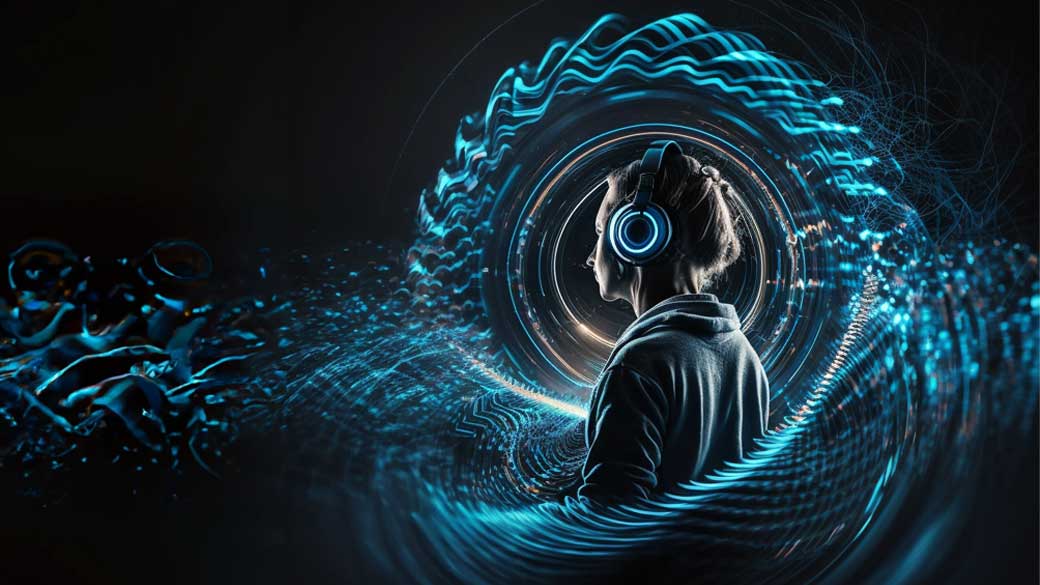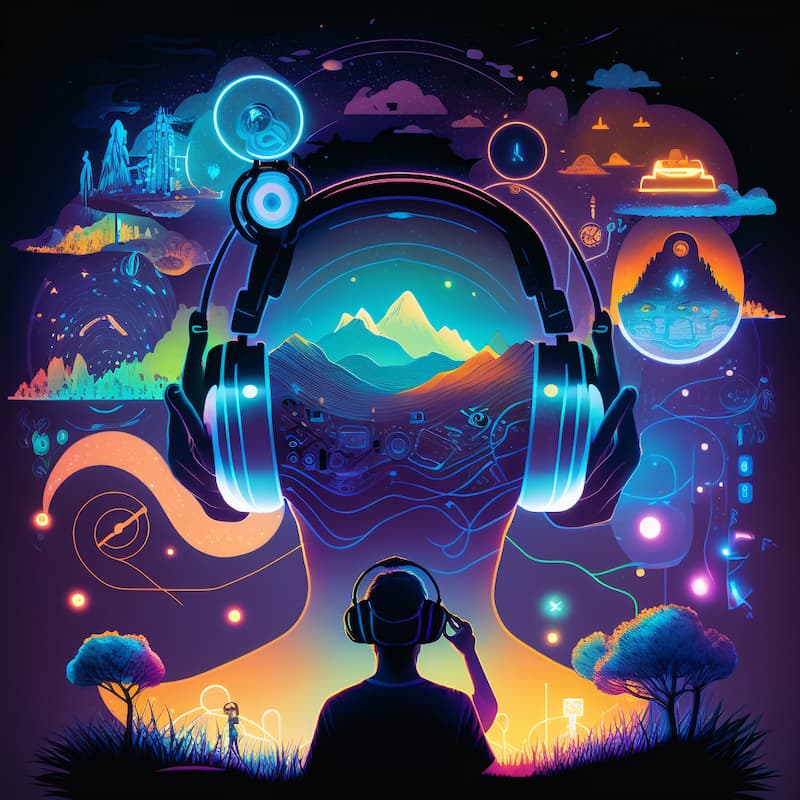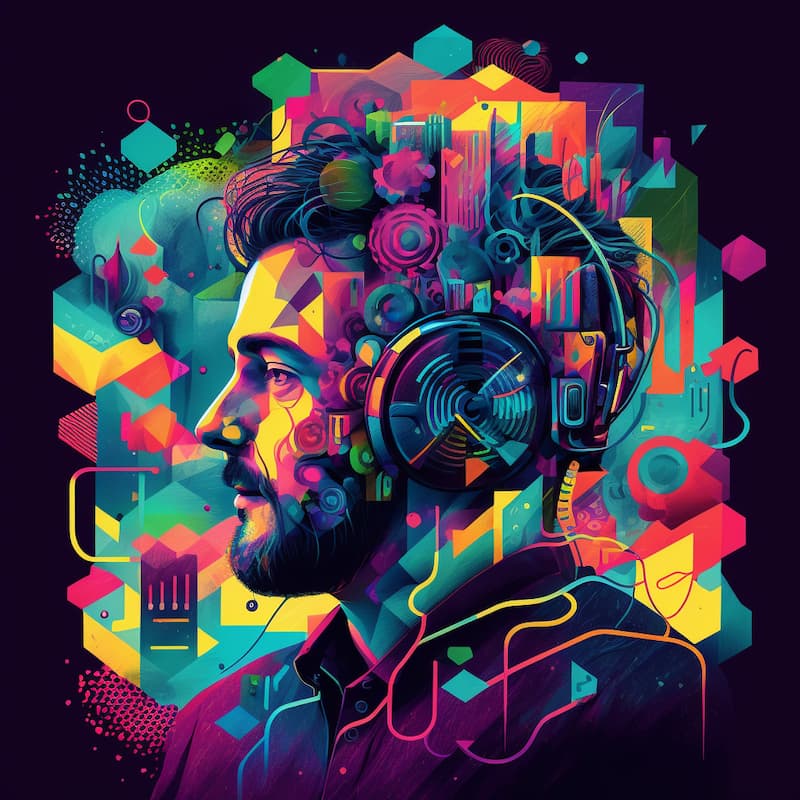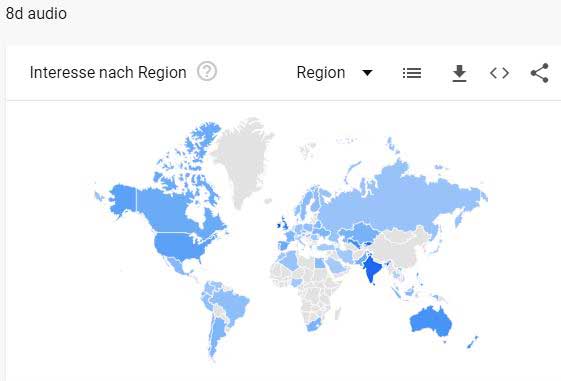
8D Audio – The Future of immersive Music?!
Content
…or not? Ok, I haven’t heard and seen anything that has so much to do with 3D audio. Still, it is so far away from immersive audio. That’s why I wanted to introduce 8D Audio, 8D Music Technology, or whatever it’s called on the Internet. Furthermore, I’ll show you how such a questionable and unique listening experience best 8d audio is made in a tutorial.
A version of Pentatonix is currently going viral on WhatsApp. It’s called 8D Technology here and claims to be the first time you hear and listen to music with your brain – not your ears. Also, you’re not supposed to hear the music through the headphones, but “from the outside”. If you read the article above you now know what’s all about and can impress friends with deep knowledge.
Feel free to contact me with you have additional questions or want to give feedback!
Update 2023/04
What is up with 8D, 9D, 12D, 1000D?! But in order to be special, people changed the number of what’s happening. So you have a lot of 5D, 12D, 16D… whatever videos that are basically 8D. So I would put them all into the box of if the sound is rotating around your head all the time, this is what I would not consider. It doesn’t matter how many Ds there are. It’s still just two audio channels on somewhat spatial audio.
Honestly, I’m happy that it’s not called 3D because then everybody would be confused. But now what’s 3D audio? So I would say that 8D audio is like a special case of 3D audio where you just have such a thing of music rotating around your head. Some say it gives you the impression of listening to live music. Although others even suggest it makes you listen to music ‘with your brain’ instead of your ears. That’s all what 5D, 8D, 12D audio is.
Now there are several trending TikTok videos with 4D audio – it’s also not really a thing. Not only is it more of a marketing term but people tend to add more “D”s in order just to sound more important. Maybe you know there are 3D cinemas and then someone said:
let’s call it 4D cinema where you have winds or 5D cinema where you have rain and the seats are moving.
This is the extra dimension but from an audio technology standpoint, it doesn’t make any sense in the context of binaural audio. The maximum is 3D audio in terms of listening to sound. But what Mercedes-Benz did by adding a vibration feature to the seats so that you would feel the live music even more. With that reported positive effects, I’m OK that’s called extra dimension – 4D audio.
So long story short: ignore everything that’s beyond 3D because it doesn’t make any sense from all the engineering perspectives. What’s next, calling it supersonic experience?
If you really want to know how marketing can benefit from spatial audio in terms of market growth you can check out this blogpost.

Listen to 8D Music
What is 8D Audio?
But one thing at a time. To put it briefly into words, what the whole thing is: Someone came up with the idea of taking commercial music and using a spatialization effect to let it “circle around his head”. Then an appealing music visualization is added and uploaded to YouTube as a video. I’ll show you exactly how to do that in a video later.
How does 8D audio work? The thing is, the effect only works through headphones. So from a technical point of view, similar effect of the 8D audio can be called binaural stereo. From an audio engineering perspective, it can be put in the same category as “Bass Boosted Version”. This means to a commercial music track, producers manipulate and add effects – everyone using the same techniques and not the good kind. Since no professional would usually do this, the result is questionable. I believe the correct word is “disimproved.”
And what is 8D Music?
8D allegedly stands for eight dimensions or not?. To be honest, I have no idea why eight and which dimensions are meant: left, right, front, back, top, bottom… Uh, what else?! 8D audio is a marketing term for a method that creates fake surround sound from standard stereo audio files.
So this self-proclaimed technology is not an audio format in itself. I would describe it as “binaural rotation around the head with reverb effects”. So in the end product, it’s a normal stereo file – not various audio channels. That’s why, from a technical point of view, the content creator can easily go distributing sound on YouTube.
This is what a renowned audio Prof. Farina who is konwn for academic articles said about it:
Quad was somewhat a failure, as with just 4 discrete directions you can’t create a decent continuous soundscape, incurring in the so-called “speaker detent” effect, the sound collapses in the closest loudspeaker. At the beginning of the binaural technology, no plugins were available for rendering binaurally a sound source in an arbitrary position. So the binaural rendering was done employing just a small number of discrete directions, as said initially just 4, then 8 (in an octagon, of course): I remember playing with this approach 20 years ago, when the only available multichannel convolver was Pristine Space by Voxengo, which can convolve a maximum of 8 channels with 8 independent IRs. So a single instance of Pristine Space was capable of rendering 4 discrete and static sources, each being convolved with the corresponding stereo HRTF. For 8D you did need to use two instances of Pristine Space, which was quite demanding for the computers of 20 years ago… That was the origin of 8D. Nowadays it is barely stupid to limit binaural rendering to just 8 discrete directions in an octagon at ear height. We have now excellent and free binaural plugins which allow us to position freely any number of sound sources in any direction on the sphere and to move them smoothly around… So now we can create true spherical binaural soundtracks, with no limit on the number and position of discrete directions. Still, people creating these excellent binaural soundtracks name them “8D”, not understanding the meaning of the term and the history of binaural rendering…
It was 20 years ago, perhaps 25… It all started with the work of Bill Gardner at MIT. In 1992-93 he did measure the HRTF of the Kemar dummy head, and he developed the most efficient algorithm for fast not-uniformly-partitioned convolution in the frequency domain. However I do not remember Bill Gardner employing explicitly the term 8D. I think it was used only a couple of years later, as initially the binaural rendering was done in 4D (quad)…
You can create this phenomenon with all 3D audio formats. So it doesn’t matter whether Dolby Atmos, Ambisonics, Auro 3D, wave field synthesis, etc are used.
You can imagine it as if an audio object is moved through a virtual room (like in virtual reality) as a sound source. Strictly speaking, the result of the 8D Tunes is actually only two-dimensional. No hight-information is used. The sound can only be located from one speaker, left, right, front and back. But not from above or below. This means that 8D audio in the classic sense is more like 360°, as is usual with 5.1 or Dolby Surround sound speaker.

How 8D videos sound
Listening Demos
What fascinates me so much about it is the reaction of the users, because such videos of popular songs have millions of clicks on Youtube. Like the 8D Tunes channel:
- Imagine Dragons - Believer (8D AUDIO), 26 Millionen views
- Billie Eilish & Khalid - Lovely (8D AUDIO), 23 Millionen views
- AR Rahman 8D Music, 12 Millionen Views
User Comments
If you look into the comments of e.g. Imagine Dragons video, you will notice the enthusiasm:
- “Now I understood the value of two ears….😂”
- “Anyone else took off their headphones to check if their volume was high or their headphones weren’t working?”
- “I was watching this while the rest of my family were asleep, I thought I woke them up”
- “Im so used to this, normal music feels weird now”
- “No need to buy tickets for concert”. (This comment has 3000 thumbs up!)
Trend-Analysis
One of the two examples comes from an Indian artist and now I’ll tell you why. If you look at the search queries, the 8D songs seem to have their origin here.

In other words, what started with Bollywood has now also reached pop music.
Why 8D Audio and music is a disgrace to artists
Since sound is always difficult to grasp, I try to illustrate it with a visual analogy.
| Visual | Auditive |
|---|---|
| Imagine going into a museum to look at a painting. The audience is enjoying this masterpiece. | Just like people enjoy music that’s playing on the radio, streaming services or social media. |
| But now a visitor has the idea to take a photo of the painting. This gives him a pixelated image of the real work. | An Internet user downloads the mp3 from YouTube, which significantly reduces the quality. |
| Then he adds several Instagram filters, which completely change the artwork. He is not a designer and has little knowledge of color theory and design. | Then he sets sound effects like reverb and panning parameters. He has neither a binaural recording studio nor a trained ear. Tada, 8D Audio is done. |
| The artist of the painting now sees his work, which has been disfigured, on social media. He has thought a lot about color and intention but the work is ruined. | A musician discovers his stolen work on YouTube, which now sounds completely different. The dynamics, frequency response and depth graduations, which were worked out with much love for detail, are now obsolete. |
So, do we want to mess up Picasso? I don’t think so. You can still follow me on Instagram though :D.
Back to topic: You can’t hide the success of the 8D. So let’s see what’s really behind it:
The secrets behind the Success
I’ve read a few articles from the media and entertainment industry on 8D Audio but stumbled across many, woolly phrases. Some people call it the new ASMR (Autonomous Sensory Meridian Response). In terms of hype factor that may be true but technically doesn’t really have much to do with it. Anyways, for me 8d audio work but four points are crucial for the hype:
Circling around the head
Admittedly, one has probably never heard music like this before. To a sound person, the rotation sounds as if someone had turned the panning knob like a madman for fun. But well, the effect is obvious and that’s probably why it works so well. The listener quickly notices that there is a movement here that he or she has is new to. Binaural sound can distinguish left and right well, but it is more difficult to differentiate front and back. By the constant spinning, it is easier for our brains to localize sound. So the challenge of localization was not so badly solved.
Spatial Reverb Effects
Another point that can be seen in the commentaries is what is known in the audio engineering world as externalization. This means that one perceives sound – even through headphones – as if it were coming from outside the headphones. If you normally listen to music, the music is localized by our brain between the ears.
With 8D Sound, however, incredible acoustics is also added. This makes us feel as if we’re sitting in another room. Most of the time it’s the sound of speakers in a living room or concert hall. But wait a minute, reverb effects are already used in all music productions for achieving depth. So that alone is not enough to perceive the sound “from outside”.
HRTF (Head-related transfer function)
OK, now it’s getting nerdy, but here’s the secret. All our lives, our brain has learned how to perceive our environment through three-dimensional hearing. In detail, this works via interaural intensity differences (IID), the interaural time difference (ITD), and filter curves (the actual HRTF), combining equalization techniques.
An example: We hear a car approaching from the left. The car is perceived louder by the left ear than by the right ear. This is mainly because the right ear is hidden by the head as if there was a wall in between that reduces the volume.
Also, the sound from the car reaches the left ear faster. Sound travels fast, but even for our average ear distance of 17.5cm, it needs a maximum of 0.63ms. Our brain can perceive this. Finally, noise from the car also has a different frequency curve in the left ear, this is due to our auricle. Thanks to it, sounds coming from the front sound different frequencies from those coming from the back.
It’s exactly these parameters that they “carefully mix” and are added to 8D audio content. So a rendering occurs that calculates how the music would sound for two human ears. Therefore it can be localized in three dimensions.
The Same in Green
Phew, that was enough audio engineering, for now. So let me explain why this hype is so popular in a marketing sense. There’s a good meme about it: “Same, but different, but still the same songs”. So if you have a song that you like, you will likely enjoy the 8D version as well. It’s the same song but in a different package. That’s why cover songs are so popular: you have a good mix of something familiar, with a touch of something new.
Do It Yourself (DIY) 8D Audio
Make your own 8D Song. Seriously, please don’t do that, remember Picasso! But how is shown in my tutorial video right here by yours truly:
Conclusion
However, what is one supposed to think of that now? Good question, because 8D Audio polarizes quite a bit, especially among sound engineers. Therefore I want to highlight the pros and cons of sound engineers and the actual users.
Pro:
- I think it’s always good to live music, when people are motivated to pay attention to the sound and have fun with it.
- It reaches masses of listeners who would never have reached conventional 3D audio streaming platforms otherwise. Here we speak of hundreds of millions of views, which is something.
- Many comments and sounds are coming and screaming for more, there will be more demand for immersive 3D audio in the future.
Con:
- Even though it was called 8D Audio and not 3D Audio, Spatial Sound, Binaural etc.. It is very difficult for the listener to distinguish what exactly is what. Why something is good or bad, so for the small 3D sound market, it is probably causing additional confusion.
- From a technical point of artists and producers side of view, the whole thing is a nightmare. It fells like, knowledge, and money put into high-end mastered music. But then someone comes along, writes “8D Music” on it and everyone thinks it’s better to throw all the rules, laws and experiences of audio mixing of the last decades overboard. Feels like rights holders put too much time into not feeling stressed when the song ends up for the brain into thinking its rotating in a bigger space around you.
As always, everyone has to form their own opinion, but I prognose that 8D audio has a positive effect on the long run. Nonetheless it is a very interesting topic to keep an eye or ear on. Well, it tricks your brain, perhaps not really your ears … let’s just say: keep it in mind and see if it was just a hype.
The best 8D audio use-case
To take the point home: Want to know what users think we can do with spatial audio? Check out this commercial I recorded and consulted for Audi:
Contact me for the best 8D audioRelated Articles
Virtual Reality Music for cinematic 360° experiences
Dolby Atmos Music - What is this 3D sound experience in detail?
360 Reality Audio - What is the Sony 360RA experience in detail?
Spotify 3D Audio - what's already there and Dolby Atmos to come?
Spatial Audio on Demand - 3D Music Streaming, Dolby etc.
Dolby Atmos Apple Music: Why It Sounds Bad and How 3D Spatial Audio Can Do Better